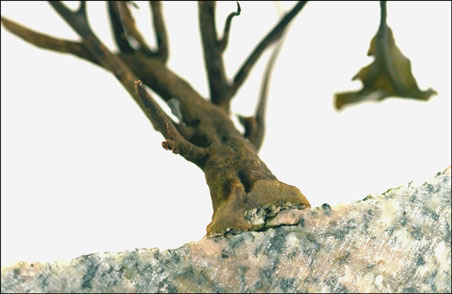| 2003 |

|
YEAR BOOK |
National University of Ireland, Galway
|
Environmental fingerprinting using seaweed
|

Work in the Department of Botany, NUI, Galway, initiated by partners in the seaweed industry sector, has investigated trace metal contents of Ireland's commercially important seaweed species, such as 'Knotted Wrack' (Ascophyllum nodosum), 'Dulse' (Palmaria palmata) and 'Carrageen Moss' (Chondrus crispus). Recent research funded by the Higher Education Authority Programme for Research in Third Level Institutions Cycle II in the Department of Botany, the Martin Ryan Institute and the Environmental Change Institute has included an extensive survey of metals in seaweed from sites of active harvesting on the west coast and from sites close to industrial and municipal centres along the south and east coasts. Metal contaminants in seawater were determined in collaboration with the Southampton Oceanographic Centre, UK. Additional intensive investigations focused on the Shannon Estuary, Ireland's largest estuary, with several point sources of metal contamination, and assessed the contaminative status of a range of seaweed species from the Arklow Estuary, Co. Wicklow, as influenced by acid mine drainage from the Avoca mines.
Chemical analyses of seaweed, seawater and sediments from these locations will facilitate the production of a contamination map indicating seasonal and spatial distribution of metal hot-spots in the Irish coastal environment. In addition, a biomonitoring programme entailing the movement of 200 rocks, with seaweed attached, between clean and moderately polluted sites evaluates the use of seaweeds as 'active biomonitors' of coastal metal contamination. As part of the same project, a seaweed bioassay for metal contamination in seawater has been developed using pulse-amplitude-modulated chlorophyll fluorescence. This method can detect environmental stresses such as metal contamination in seaweeds, and has proven far more sensitive and faster than traditional bioassays, as it yields results within hours rather than days.
A series of interdisciplinary botanical, biochemical and geochemical studies, supported by a Marie Curie Fellowship (in collaboration with Queen's University, Belfast), are used to link the chemical composition of seaweed to underlying bedrock types such as basalt, granite and chalk. Current collaboration with Dr Martin Feely, Department of Geology, NUI, Galway, is revealing a stunning insight into the mode of attachment by seaweeds in response to different rock types. Macroscopic and microscopic sections cut through the holdfast-bedrock interface strongly suggest that not only biophysical, but also biochemical interactions occur.
Contact: Dr. Dagmar Stengel, Department of Botany, NUI, Galway. E-mail: [email protected]